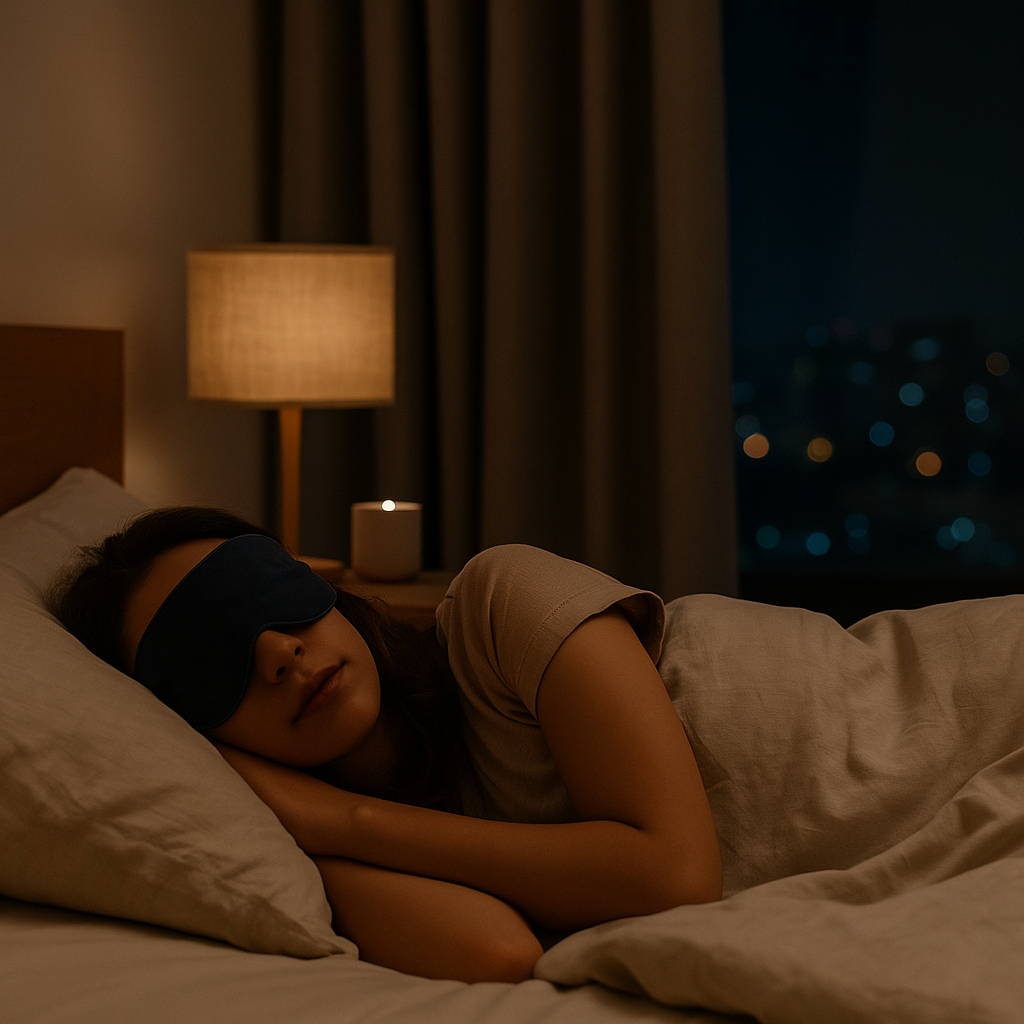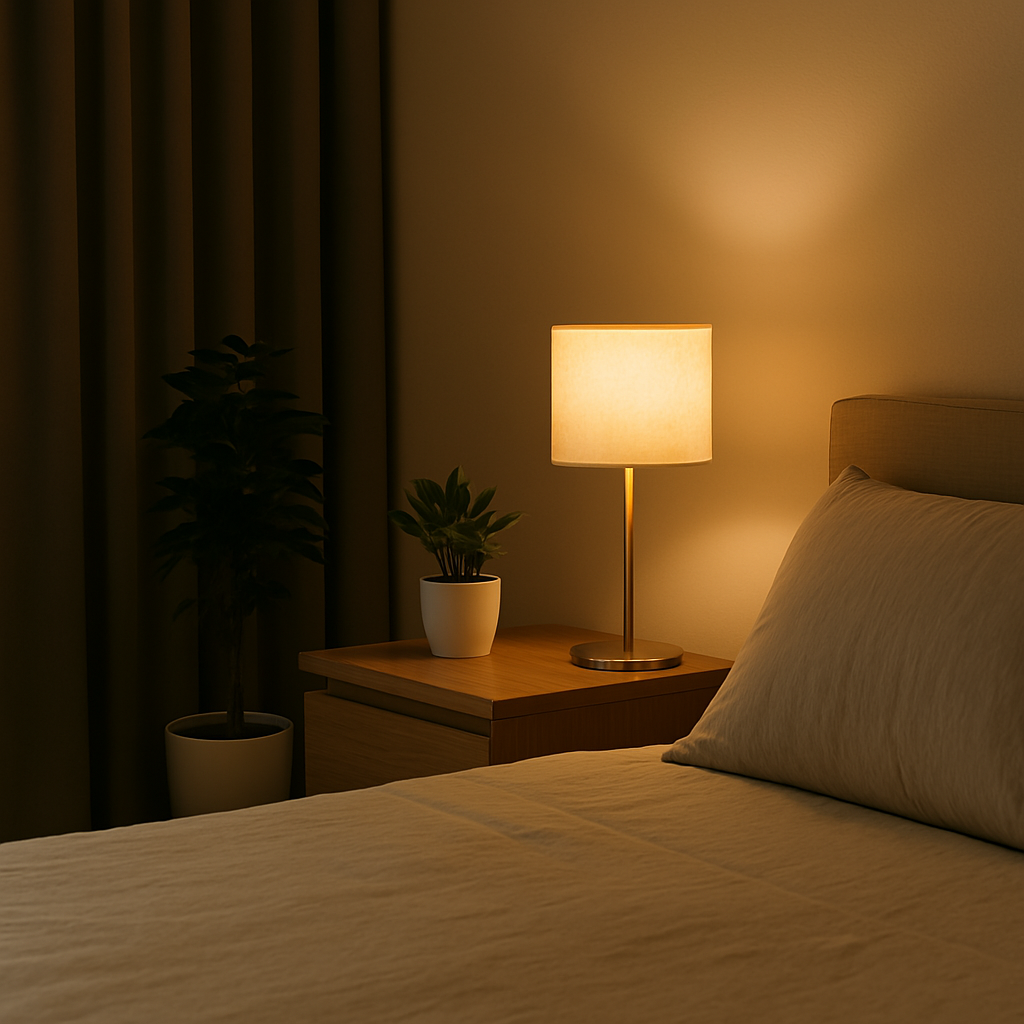When your rhythm is aligned, sleep becomes effortless.
Your Body Already Knows How to Sleep — If You Let It
You don’t need to force sleep.
You don’t need fancy supplements or techy sleep trackers.
What you do need is rhythm.
Your body is already designed to sleep deeply and wake naturally — but only when your circadian rhythm is in sync. That rhythm, however, is surprisingly easy to disrupt… and even easier to ignore.
In this guide, we’ll show you how to bring your body clock back into alignment — so you fall asleep faster, stay asleep longer, and wake up feeling like you actually rested.
What Is a Circadian Rhythm, Really?
Your circadian rhythm is your body’s internal clock — a 24-hour cycle that tells your brain when to wake, eat, move, and rest.
It regulates:
- Melatonin (your sleep hormone)
- Cortisol (your energy and alertness hormone)
- Hunger signals, body temperature, digestion, and more
And it’s highly influenced by light, temperature, and routine.
When your circadian rhythm is in sync, everything feels easier — including sleep. But when it’s off, your body and mind feel like they’re running on different schedules.
Signs Your Body Clock Is Out of Sync
If any of these sound familiar, your circadian rhythm may need a reset:
- You’re wide awake late at night… but exhausted in the morning
- You wake often or can’t fall asleep easily
- You feel foggy, crash in the afternoons, or hit “snooze” 3 times every morning
- You sleep in on weekends and can’t get to sleep on Sunday nights
This kind of “sleep jet lag” isn’t permanent — but it can leave you feeling tired, restless, and out of step.
How to Reset and Sync Your Body Clock Naturally
Let’s bring it back into rhythm. No pills. No pressure. Just simple cues your body already understands.
🌞 1. Get Bright Light Within 1 Hour of Waking
Light in the morning is your circadian “anchor.”
It tells your brain: “It’s daytime. Let’s go.”
Try this:
- Open your curtains as soon as you wake up
- Step outside for 10–15 minutes (yes, even if it’s cloudy)
- Don’t wear sunglasses right away — let natural light hit your eyes
💡 This one habit alone can dramatically shift your energy and reset your body clock.
⏰ 2. Wake Up at the Same Time Every Day
Consistency is more powerful than you think.
- Choose a wake-up time you can stick to (±30 minutes), even on weekends
- Resist the snooze button — getting up at the same time helps regulate your melatonin production that night
Tip: Pair this with a calming morning ritual (hydration, movement, light) to train your rhythm even faster.
🌙 3. Dim the Lights in the Evening
Melatonin production starts when the light fades.
Try this:
- Use lamps or warm lighting after 8PM
- Avoid screens, overhead LEDs, and phone glare
- Put on your sleep mask before you’re ready to sleep — use it as your “off switch”
🎯 Our 3D Sleep Eye Mask is shaped to block out all light without pressing on your eyes — perfect for deep, uninterrupted sleep.
🧘 4. Build a Wind-Down Routine at the Same Time Every Night
Predictability creates calm. A consistent wind-down cues your nervous system to slow down.
Try this:
- Gentle stretching, journaling, or breathwork
- Herbal tea (no caffeine)
- Insert your earplugs, lower the lights, and move into silence
🎯 Slumberite’s Noise-Cancelling Earplugs reduce the background buzz that keeps your brain in “high alert” mode.
Not sure how to build a wind-down ritual? Start here.
Optional Framework: The 10-3-2-1-0 Rule
A simple rule to bring structure to your evening and support your rhythm:
- 10 hours before bed: No more caffeine
- 3 hours before bed: No heavy food or alcohol
- 2 hours before bed: No intense work
- 1 hour before bed: No screens
- 0: The number of times you hit snooze in the morning
Try this for 5 nights and see what changes.
Sleep is a System — Not a Switch
Remember, your body wants to help you sleep.
It’s built for rest. It just needs clear signals.
When you create consistent patterns of light, movement, and calm, your circadian rhythm can do what it was made to do — regulate your sleep-wake cycle like clockwork.
You don’t need to do everything at once. Start with one cue:
- Wake up at the same time
- Get outside in the morning
- Dim your lights tonight at 8PM
- Put on your eye mask 30 minutes before sleep
Start small. Stay consistent. Let rhythm do the rest.
Bonus: Build Your Routine Around Your Tools
We designed the Fall Asleep Faster Kit to make it easy for you to build a rhythm — even if your environment isn’t ideal.
It includes:
- Our signature 3D Sleep Mask to block light and cue melatonin
- Reusable Earplugs to soften sound and settle your senses
Use them at the same time every night and your body will learn:
It’s time to sleep.
💬 Frequently Asked Questions (FAQs)
What’s the best way to reset my circadian rhythm quickly?
Wake up at the same time every day and get outside within 30–60 minutes. Morning light is the fastest, most effective reset.
Can I sleep in on weekends?
Yes — but keep it within 30–60 minutes of your normal time. If you sleep in too long, it disrupts your rhythm and can make Sunday night harder.
How long does it take to reset my body clock?
Most people feel a noticeable change in 3–5 days of consistent cues. Full realignment may take 1–2 weeks depending on how out-of-sync your rhythm is.
Does blue light really affect sleep that much?
Yes. Blue light suppresses melatonin and tricks your brain into staying alert. Using a sleep mask and reducing screen time at night can make a huge difference.
Should I use an eye mask and earplugs even if I fall asleep fine?
Yes — because the goal isn’t just falling asleep, it’s staying asleep. Sensory protection helps your brain stay in deeper stages of rest.



Leave a comment
This site is protected by hCaptcha and the hCaptcha Privacy Policy and Terms of Service apply.